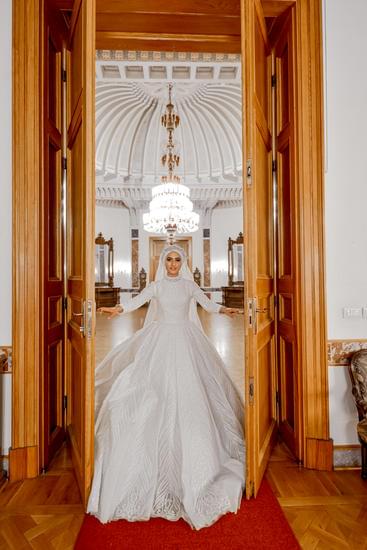Planning a wedding involves many details, and one important factor is determining how long the wedding dinner should last. The timeline for the dinner sets the tone for the evening and can greatly impact the overall experience for guests. From the start of cocktail hour to the last dance, every moment should be carefully planned to ensure a seamless and enjoyable event.
The ideal timeline for a wedding dinner is crucial for creating a memorable experience for both the couple and their guests. How long for wedding dinner becomes an important consideration, as it affects factors such as guest enjoyment, catering requirements, and venue timing. In this article, we will explore the perfect timeline from start to finish and provide tips for planning a smooth and enjoyable wedding dinner experience.
Factors such as guest count, meal service style, speeches or toasts, entertainment, and cultural traditions all play a role in determining the length of a wedding dinner. It’s essential to consider these factors when creating the timeline to ensure that everything runs smoothly on the big day. By carefully planning each phase of the dinner and making necessary adjustments, couples can guarantee that their wedding dinner is not only unforgettable but also enjoyable for everyone in attendance.
The Ideal Timeline for a Wedding Dinner
When it comes to planning the ideal timeline for a wedding dinner, there are several key factors to consider. From the moment guests arrive at the reception to the last dance of the evening, every detail must be carefully orchestrated to create a seamless and enjoyable experience for everyone in attendance. Here are some guidelines to help you plan the perfect timeline for your wedding dinner:
- Arrival and Cocktail Hour: As guests begin to arrive at the reception venue, it’s important to have a designated area for them to gather and enjoy cocktails and hors d’oeuvres. This is typically known as the cocktail hour and sets the tone for the rest of the evening. During this time, guests can socialize, enjoy drinks, and appetizers while waiting for the main event to begin.
- Dinner Service: Once the cocktail hour comes to an end, it’s time to transition into dinner service. Whether you opt for a formal sit-down dinner or a buffet-style reception, it’s essential to have a smooth and efficient process in place for serving food and beverages.
The length of time allocated for dinner will depend on various factors such as the number of guests, menu choices, and entertainment planned during this portion of the evening. - Toasts, Speeches & Traditions: After dinner is served, it’s common for there to be speeches, traditional customs (such as cake cutting or garter toss), or other significant moments that take place before dessert is served. These activities should be factored into your timeline so that they don’t feel rushed or cut into other parts of the evening.
Ultimately, finding the ideal timeline for your wedding dinner requires careful consideration of all these elements in order to ensure that everything runs smoothly from start to finish.
Factors to Consider When Determining the Length of the Wedding Dinner
When planning the length of your wedding dinner, there are several factors to consider in order to ensure a seamless and enjoyable experience for you and your guests. From the style of service to the number of courses, these factors will play a crucial role in determining how long your wedding dinner should be.
Style of Service
The style of service you choose for your wedding dinner will have a significant impact on its length. A traditional formal sit-down dinner typically takes longer than a buffet-style reception. With a sit-down dinner, each course is served to guests at their tables, which can extend the overall duration of the meal. On the other hand, a buffet-style reception allows guests to serve themselves at their own pace, which can expedite the dining process.
Number of Courses
Another important factor to consider is the number of courses you plan to include in your wedding dinner. A multi-course meal with appetizers, salad, soup, entree, and dessert will naturally take longer than a simpler three-course meal. If you’re concerned about the length of your dinner, consider reducing the number of courses or opting for smaller portions to keep things moving along.
Guest Preferences
It’s also essential to consider the preferences and needs of your guests when determining the length of your wedding dinner. Some guests may have dietary restrictions or medical conditions that require them to eat at specific times.
Additionally, keep in mind that elderly and young guests may have shorter attention spans and less endurance for lengthy dinners. Taking these factors into account will help ensure that all of your guests are comfortable and able to enjoy the dining experience without feeling rushed or fatigued.
By carefully considering these factors when determining the length of your wedding dinner, you can effectively plan a dining experience that is both enjoyable and memorable for everyone in attendance.
Tips for Planning a Seamless and Enjoyable Wedding Dinner Experience
Planning a seamless and enjoyable wedding dinner experience is crucial to ensure that the event runs smoothly and all guests have an enjoyable time. There are many factors to consider when planning the timeline for your wedding dinner, from the start of the meal to the end of the evening.
Consider Your Guest List and Schedule
One important factor to consider when planning your wedding dinner is the size of your guest list. The number of guests will impact how long it takes to serve everyone, so be sure to work with your caterer or venue to determine a realistic timeframe. Additionally, take into account any special dietary restrictions that may require individual attention from the kitchen staff.
Coordinate With Your Vendors
Another tip for planning a seamless wedding dinner experience is to coordinate with all vendors involved in the evening, including caterers, servers, and entertainment providers. Make sure that everyone is on the same page regarding timing and schedule so that there are no unexpected delays during the dinner service.
Entertainment During Dinner
To keep guests engaged during the wedding dinner, consider incorporating entertainment such as live music, speeches, or even interactive activities. This can help break up any potential downtime and create a more enjoyable experience for everyone. Just be sure to not let these activities drag on too long, as you’ll want to keep to a reasonable timeframe for the overall event.
A Closer Look at the Traditional Formal Sit-Down Dinner vs Buffet Style Reception
When it comes to planning the perfect wedding dinner, one important decision to make is the style of service. The traditional formal sit-down dinner and buffet style reception are two popular options, each with their own unique advantages.
The formal sit-down dinner offers an elegant and sophisticated atmosphere for guests to enjoy. With a carefully planned menu, each course is served directly to the guests at their tables. This creates a more intimate dining experience and encourages conversation among guests. However, this style of service often requires a longer time commitment, as guests must wait for each course to be served.
On the other hand, a buffet style reception offers a more relaxed and informal dining experience. Guests have the opportunity to select their own dishes from a variety of options, allowing for greater flexibility and customization. This style of service tends to be more time-efficient, as guests can begin eating as soon as they have their food.
When considering which style of service is best for your wedding dinner, it’s important to take into account the overall timeline of the event and how long you want the dinner portion to last. A formal sit-down dinner may require a longer time frame in order to accommodate multiple courses and table service, while a buffet-style reception may allow for a quicker dining experience.
Ultimately, the decision between a formal sit-down dinner and buffet style reception will depend on your personal preferences, as well as the overall vibe and theme of your wedding. Both options can create a memorable dining experience for you and your guests, so consider how each style aligns with your vision for the day.
Creative Ways to Keep Guests Entertained and Engaged During the Dinner
When it comes to keeping guests entertained and engaged during the wedding dinner, there are several creative strategies that can make the evening even more enjoyable. One popular option is to incorporate table games or activities that encourage interaction between guests. From trivia quizzes about the couple to icebreaker games, these activities can help break the ice and keep the energy high throughout the dinner.
Another fun idea is to have live entertainment during the dinner. This could include hiring a musician or band to perform soft background music, or even incorporating a professional dance performance for guests to enjoy while they dine. Live entertainment adds an element of excitement and elegance to the evening, creating a memorable experience for everyone in attendance.
For couples looking for a more personalized touch, consider creating a “memory lane” slideshow or video montage showcasing significant moments in the couple’s relationship. Displaying this visual tribute during the dinner not only entertains guests but also allows them to feel more connected to the newlyweds by witnessing their journey together.
In addition to these ideas, some couples opt for unique entertainment elements such as photo booths with props, caricature artists, or interactive food stations where guests can customize their meals. These creative additions not only keep guests engaged but also add an extra layer of fun and personality to the wedding dinner experience. Ultimately, finding the right balance between tradition and innovation will help ensure that every guest has a wonderful time at this special event.
Common Mistakes to Avoid When Timing the Wedding Dinner
When it comes to timing the wedding dinner, there are a few common mistakes that couples often make, leading to potential hiccups and inconveniences for themselves and their guests. One of the most common mistakes is underestimating the time it takes for guests to transition from the ceremony to the reception venue. It’s crucial to factor in travel time, traffic, and any unforeseen delays in order to accurately gauge when the dinner can realistically begin.
Another mistake to avoid is not accounting for enough time between courses during the meal. This can lead to a rushed or drawn-out dining experience, neither of which is ideal.
In addition, failing to communicate the timeline effectively with all vendors involved in the dinner can also lead to missteps. Whether it’s the catering staff, DJ, or venue coordinator, everyone should be on the same page about when each phase of the dinner will take place. Finally, overlooking any potential technical issues with equipment or lighting can cause unnecessary delays during speeches or entertainment portions of the evening.
To prevent these mishaps and ensure a smooth wedding dinner experience for everyone involved, it’s important for couples to plan ahead and anticipate potential roadblocks. By considering all aspects of timing and communication, they can help guarantee that their special day unfolds seamlessly.
| Common Mistakes | How to Avoid |
|---|---|
| Underestimating travel time between ceremony and reception | Factor in traffic and unforeseen delays |
| Not enough time between courses during meal | Plan out a realistic timeline for serving each course |
| Failing to communicate timeline effectively with vendors | Ensure all vendors are aware of the timeline and are in sync |
Adjusting the Schedule
When it comes to planning a wedding dinner, no matter how meticulously you plan the timeline, unexpected delays and time constraints can still arise. It’s important to have a plan in place for how to handle these situations in order to ensure that the wedding dinner runs as smoothly as possible.
One common factor that can cause delays during a wedding dinner is the time it takes for guests to move from one part of the event to another. Whether it’s transitioning from the ceremony to the reception venue or moving from cocktail hour to the dinner area, these transitions can often take longer than anticipated. To help mitigate this, consider having designated staff or ushers to help guide guests and keep things moving along efficiently.
Another common delay during a wedding dinner can be attributed to meal service. Regardless of whether you’re having a plated sit-down dinner or a buffet style reception, serving food to a large number of guests can take time. Consider working closely with your catering team or venue staff to create an efficient meal service plan that minimizes any potential delays.
It’s also important to be flexible and prepared for unexpected time constraints that may arise throughout the evening. Whether it’s due to weather delays, unexpected speeches or toasts, or simply running behind schedule, being able to adapt and adjust the timeline as needed is key in ensuring that the wedding dinner is enjoyable for all guests. By having a solid plan in place for handling these scenarios, you can navigate through any unexpected delays with ease.
| Common Delays During Wedding Dinners | How to Address Them |
|---|---|
| Transitions between different parts of the event | Designated staff or ushers, clear signage, communication with guests |
| Meal service timing | Closely working with catering team/venue staff, efficient meal service plan |
| Unexpected time constraints | Flexibility in adjusting timeline, preparation for unexpected scenarios |
Conclusion
In conclusion, the wedding dinner is a significant part of the overall celebration and should be carefully planned to ensure it is memorable and enjoyable for all. The ideal timeline for a wedding dinner typically ranges from two to three hours, allowing ample time for guests to enjoy their meals, socialize, and participate in any planned activities.
Factors such as the number of guests, type of meal service, and entertainment options should be taken into consideration when determining the length of the dinner.
To plan a seamless and enjoyable wedding dinner experience, couples should consider the preferences of their guests while also staying true to their own vision for the event. Whether opting for a traditional formal sit-down dinner or a buffet-style reception, it’s important to ensure that there is enough time allocated for guests to savor their meals and engage with one another.
Additionally, creative ways to keep guests entertained during the dinner can enhance the overall experience, such as incorporating interactive elements or live entertainment.
Avoiding common mistakes in timing the wedding dinner is essential to ensuring a smooth flow of events. It’s important to communicate with vendors and venue staff about any expected delays or time constraints and make adjustments to the schedule as needed. By carefully considering these factors and implementing thoughtful planning strategies, couples can ensure that their wedding dinner will be a cherished part of their special day. Ultimately, creating lasting memories for themselves and their loved ones.
Frequently Asked Questions
How Long Should Dinner Be at a Wedding?
1) The length of dinner at a wedding can vary depending on the couple’s preferences and the schedule for the evening. Generally, it’s recommended that dinner should last about 1.5 to 2 hours to allow guests enough time to enjoy their meal and engage in conversation.
What Is the 30 5 Minute Rule for Weddings?
The 30-5 minute rule for weddings suggests that after 30 minutes of socializing and cocktails, guests should be seated within 5 minutes. This helps ensure that the evening’s schedule stays on track and that everyone can settle in for the meal without unnecessary delays.
How Long Is a Wedding Supper?
A wedding supper typically lasts around 1 to 1.5 hours, allowing guests enough time to savor their meals without making the evening feel drawn out. The duration of this meal often depends on factors such as the number of courses, speeches or toasts, and any planned entertainment during dinner.

I have been involved in marriages for over 20 years helping couples and singles understand more about them.





